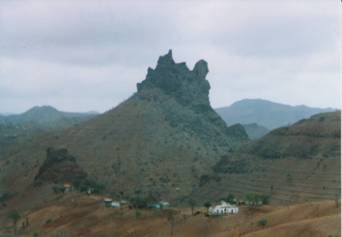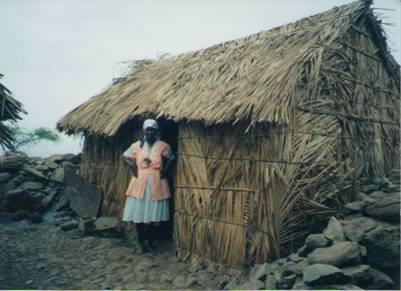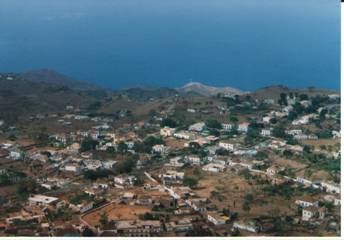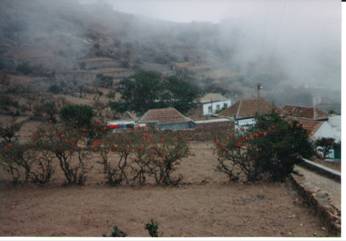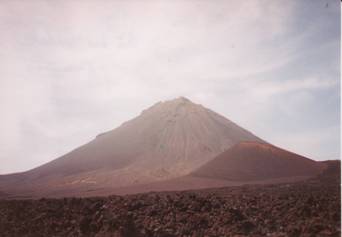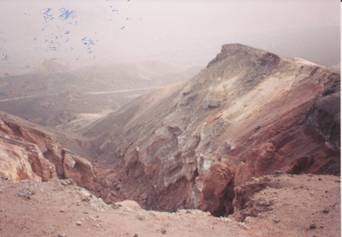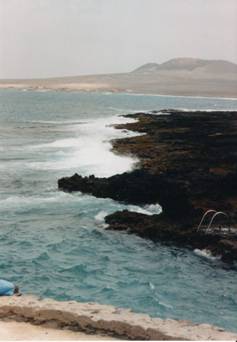Field Work
|
The Cape Verdean archipelago consists of nine inhabited islands that have traditionally been clustered into two main groups, the leeward islands to the South and the windward islands to the North. This apparently seamless geographic division conceals much variation within these two clusters and within each island. Each island was settled in different periods of history by different populations of Portuguese settlers (among other Europeans who came later) and African slaves. The islands of Santiago and Fogo were settled as early as 1461 and the island of Sal as late as 1831.
The mix between Portuguese, Mande and West-Atlantic languages makes Cape Verdean Creole a rich and innovative language. This mixing of linguistic features combined with distinct settlement histories for each island and a diglossic situation where Cape Verdean Creole continues to co-exist with Portuguese make for a complex variation continuum. Such variation presents a real descriptive challenge for all linguists involved in the documentation of Cape Verdean Creole.
The accute awareness of such variation led me to start conducting field work on each inhabited island of the archipelago in 1997 and more intensively between 1997 and 2003. The corpus I have gathered over the years and that I keep expanding provides a large database of natural speech data reflective of many of the varieties spoken in the archipelago. The objectives of my field work are manyfold: A primary goal is to give a voice and representation to the varieties spoken on all nine islands allowing linguists to document the language as accurately as possible and in all its complexity. My belief is that a thorough documentation of an oral language allows for sounder analyses when using different theoretical frameworks. Another objective is to explore how a different history of settlement involving diverse European and African populations has affected lexically and morpho-syntactically the make-up of each variety. A long-term goal is to connect the creole language spoken on the islands to other varieties and other creoles spoken on African mainland, in the Gulf of Guinea and all the way to the Caribbean, following the pioneering work of Frank Martinus (1996) who first highlighted the possible genetic relationship between Cape Verdean Creole and Papiamentu. The ultimate objective is to use the documentation and linguistic analyses that field work data provide to unveil the full complexity of the language, demonstrate its status as a full-fledged language and help promote its officialization in Cape Verde. This is a struggle that Cape Verdean and foreign activists in Cape Verde and the diaspora have led for more than three decades and that this kind of work hopes to support.
Some field work sites
Island of Boa Vista: Cabeça dos Tarafes, João Galego, Povoação Velha, Sal Rei
Island of Brava: Cachaço, Furna, Nossa Senhora do Monte, Nova Cintra, Santa Barbara
Island of Fogo: Brandão, Chã das Caldeiras, Curral Grande, Forno, Ponta Verde, São Filipe
Island of Maio: Calheta, Figueira, Vila do Maio
Island of Sal: Palmeira, Pedra de Lume, Santa Maria
Island of Santiago: Assomada, Calheta de São Miguel, Chão Bom, Cidade Velha, Espinhu Branco, Picos, Praia, São Domingos, Tarrafal
Island of Santo Antão: Paul, Porto Novo, Ribeira Grande
Island of São Nicolau: Juncalinho, Preguiça, Ribeira Brava, Tarrafal
Island of São Vicente: Calhau, Mindelo, São Pedro, Salamansa
